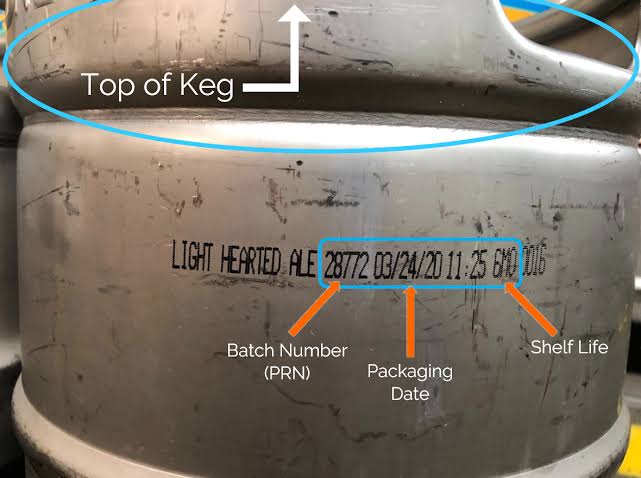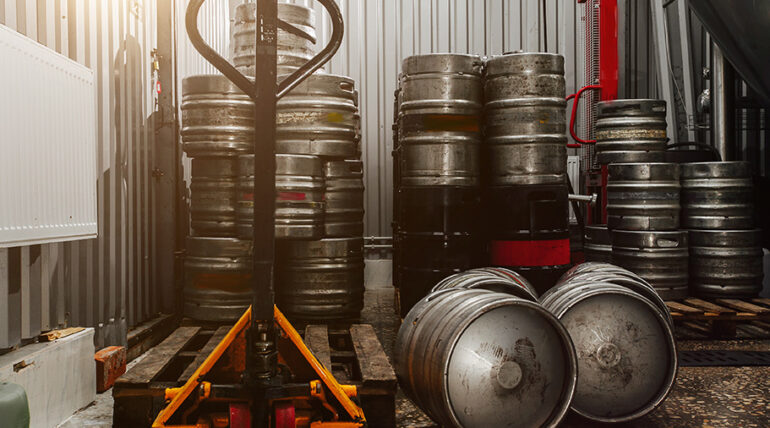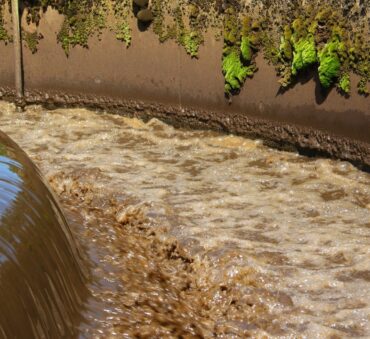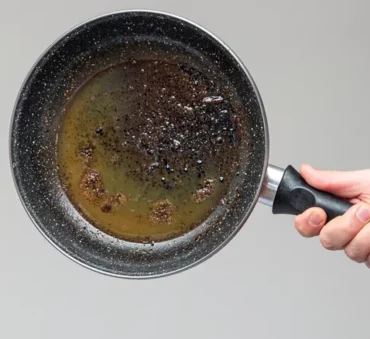Beer is one of the most popular oldest beverages in the world.
For example, did you know that the first records of brewing date back to 2400 BCE?
Throughout the years, new brewing techniques and ingredients have been introduced in the beer-making process.
However, some ingredients in beer, such as hops and malts, are prone to expiry. As beer ages, its taste, aroma, and quality may diminish, rendering it less enjoyable for consumption.
But does beer really expire? How can you tell if your brew has reached its expiration date? Also, how do you dispose of it the right way?
Understanding the answer to these questions is crucial for consumers, beer producers, and distributors.
Let’s explore everything about expired beer, including the signs of expiration and different responsible disposal practices.
Is Expired Beer Considered Hazardous Liquid Waste?
Yes, expired beer qualifies as hazardous liquid waste.
Here are the risks that this type of liquid waste imposes:
- Biochemical Oxygen Demand (BOD): This measures the amount of oxygen required to decompose organic matter in water. Expired beer, with its organic components, can contribute to BOD levels in wastewater. High BOD levels can deplete oxygen in water bodies, posing risks to aquatic life.
- Total Suspended Solids (TSS): This refers to the concentration of solid particles in water. Suspended solids (including the ones from expired beer) can cause water pollution unless they’re disposed of according to the regulations (as per the Clean Water Act).
- pH levels: These indicate the acidity or alkalinity of a liquid. Beer is acidic (with a pH range of 3.5 to 4.5), and the disposal of expired beer can impact the overall pH balance of water sources.
How to Tell if Beer is Expired?
You can either manually check the contents of a beer bottle (or a can) or just check the expiration date. Let’s see what each of these methods entail:
Manual Checkup
To determine if the beer has expired, a manual checkup is essential. Consider the following factors:
1. Appearance
The very first sign you can check is the beer’s appearance. Is the liquid cloudy or dusty?
This indicates the presence of sediment (in the form of yeast) that’s breaking down the beer.
Another thing to check is if the beer has changed its color (from light to dark). However, if the color is changed, but the beer still tastes okay, you can still drink it.
2. Smell
Take a whiff of the beer. Look out for the following unusual odors:
- Skunk-like smell: This smell indicates beer that’s been exposed to UV light for long periods. Usually, this can happen if beer is stored improperly in direct sunlight, causing bacteria to grow in the bottle.
- Urine or cardboard smell: This odor occurs when the beer is past its expiration date and is slightly oxidized.
- Grassy or apple-like smell: This indicates the presence of acetaldehyde.
3. Taste
Give it a sip. Outdated beer may have off-flavors or a flat taste, lacking the crispness of a fresh brew.
The reason behind this is the oxidation that can happen over time (yes, oxygen, even in small quantities, is still present in the bottle).
Some more common off flavors that can result from oxidation are:
- Cardboard
- Toffee
- Caramel
- Grain
- Skunk
4. Carbonation
The level of carbonation indicates whether the beer is past its prime. Does it have foam and bubbles when poured into a glass?
If the answer is no, then you’re probably dealing with an old beer.
Note: Beer that’s been chilled in the freezer can also lack body and flavor.
Beer Expiration Date
Unopened beer bottles, cans, and growlers can last up to:
- 5-9 months past their official expiration date if stored at room temperature
- 2-3 years past their official expiration date if stored in a refrigerator
However, opened beer can last only up to a day, regardless of its expiration date.
Beer expiration dates provide important information about its freshness.
A beer product typically has two expiration dates:
- Sell before date: This is the date before which the product can be sold.
- Best before date: This date indicates until when the beer has optimal taste and qualities (is best to consume).
So how exactly do you read a beer expiration date code?
Expiration date code

When it comes to the “sell before date” (also referred to as a pull date), here’s what you need to know:
| Date Code Location | Date Code Format | Date Code Meaning |
| Located on the primary packaging (the beer bottle or can) | SEPT3023 B08221836 | SEPT (Month) 30 (Day) 23 (Year) B (Production day of the week; B=Tuesday) 08 (Production site; 08=Trenton) 22 (Production line) 18 (Hour) 36 (Minutes) |
| Located on the secondary packaging (the carton that holds the beers) | SEPT3023 B0822183622222 | SEPT (Month) 30 (Day) 23 (Year) B (Production day of the week; B=Tuesday) 08 (Production site; 08=Trenton) 22 (Production line) 18 (Hour) 36 (Minutes) 22222 (SKU) |
The above production site codes are taken from Molson Coors. To understand the production site code for other beer brands, please refer to their official sites.
When it comes to the best-before dates, these are usually placed on the bottle shoulder (for bottles) or bottom of the can (for cans). This is an example of how these codes look:
BBD OCT 2023
| BBD | OCT | 2023 |
| Best Before Date | Month *Pull Date is always the last day of the month. In this case, this is Oct 31 | Year |
Beer bottles and cans also have a batch code, which consists of 14 characters, explained in the table below:
L 7 016 484 C A 22 00
| L | 7 | 036 | 484 | C | A | 23 | 00 |
| Lot | Year | Julian date | Mexico | Brewery (Toluca) | Product line (10) | Hour | Minutes |
Beer storage recommendations
What Makes Beer Go Bad?
A few things can make beer go bad, including:
- Oxidation: Oxygen is inevitably in contact with the beer (even in unopened beer bottles and cans, there’s a small amount of oxygen). The oxidation reaction causes the beer to change its flavor over time. To slow it down as much as possible, you can store beer products in dark, cool areas and use hermetic seals.
- Temperature: Does beer spoil in heat? While a few hours in a hotter environment might not affect your unopened beer, storing it long-term in drastic temperatures (too hot or too cold) will. That’s because such temperatures can ruin the beer’s flavor and qualities.
- Light exposure: Longer light exposure can degrade beer’s organic compounds. The reaction of the hops chemicals makes the beer taste bad (and you get the distinctive skunky flavor).
- Disintegration of hops: Beer can also go bad just because of the natural disintegration of hops that happens over time. To slow down this process, it’s best to keep the beer at a consistent temperature and away from UV light.
So, with this in mind, let’s define how to properly store beer so you maximize its shelf life.
Proper Storage Environment
Here are a few storage tips you can follow to keep your beer fresh for as long as possible:
- Keep it cool: It’s best to keep your beer cool (for example, in a fridge) but do not freeze it. The optimal temperature for most beers is about 2-4 degrees Celsius.
- Avoid direct light exposure: As we mentioned already, direct sunlight can damage the beer’s quality. Consider buying beer in cans as they don’t get affected by sunlight as much as bottles.
- Store beer in an upright position: This ensures the sediment settles down at the bottom and has minimum contact with the beer. It also minimizes oxidation.
- Get familiar with the type of beer: The optimal storage conditions can vary from one beer type to the next. For example, stouts can be aged, but lagers are best fresh.
What to do With Expired Beer?
Handling contaminated beer could be challenging, especially if you’re dealing with this on a commercial level. For example, during the first months of Covid-19, breweries had to handle 10 million gallons of unopened beer, which translates into about $1 billion in losses.
But the good news is that distilleries and breweries can use innovative approaches to achieve more sustainable and less wasteful expired beer disposal.
Here are some great expired beer uses:
- Distilling expired beer into ethanol: Companies like Boston Beer (which has collected $5.8 million worth of returned beer from retailers and distributors in Q1 2020) distill recycled beer into ethanol. The ethanol can then be blended into gasoline.
- Donating expired beer: For breweries facing expired beer kegs, donating these products can be a beneficial solution. This helps free up time and resources that would otherwise be used for disposal, enabling them to focus on producing fresh brews meant for direct-to-consumer sales.
- Producing hand sanitizer, whiskey and fertilizer: Distilleries can use their expired beer to produce hand sanitizer, whiskey and even use it as a fertilizer. This is a great approach to making use of expired alcohol while also saving on costs and taxes.
Expired Beer Side Effects and Health Risks
Drinking expired beer can have negative side effects, leading to potential health risks. Additionally, it can have significant environmental impacts. Here are the main downsides of improper expired beer handling:
Water Pollution
Improper disposal of expired beer can contribute to water pollution as it:
- Introduces harmful substances and pollutants into aquatic environments
- Disrupts the delicate balance of aquatic ecosystems
- Affects the health of marine life and water quality
Ocean Fauna Disruption
The harmful components in beer can lead to potential disruptions in the natural behaviors and habitats of all marine organisms. In turn, this can disrupt the delicate balance of marine ecosystems and lead to serious negative consequences for oceanic fauna.
Health Complications
As beer ages, its taste, quality, and safety can be compromised. Consuming expired beer can also lead to various health complications. Expired beer health risks include gastrointestinal issues, allergic reactions, and other health problems.
Avoiding expired beer and following proper disposal practices can help safeguard both our health and the environment.
So, what are the standard expired beer disposal procedures?
Expired Beer Disposal and Recycling Procedure
Properly managing expired beer is crucial to minimize waste and environmental impact.
At Shapiro, we have established an efficient beverage destruction and recycling procedure that ensures responsible handling and compliance with legal requirements. Let’s take a closer look at the steps involved in our comprehensive beer disposal process:
- Collection: First, we collect expired beer from breweries, distilleries, retailers, and distributors. Our dedicated team works closely with our clients to schedule pickups and ensure a smooth and timely collection process.
- Safe transportation: After collection, the expired beer is transported to our certified processing facilities.
- Legalities and financial management: Disposing of expired beer involves navigating various legal and financial intricacies. At Shapiro, we handle all necessary permits, licenses, and regulatory requirements to ensure compliance with waste management regulations. Our team is well-versed in the complexities of waste disposal, allowing our clients to focus on their core business operations.
- Recycling and destruction: Once the expired beer reaches our processing facilities, we implement advanced recycling and beverage destruction methods. Throughout the years, we have built a nationwide network of certified facilities that allow for efficient and secure disposal and recycling. Our goal is to maximize the recycling potential, minimizing waste sent to landfills.
Expired Beer Disposal Best Practices
When it comes to unmerchantable beer disposal, adhering to government regulations and guidelines is essential for responsible waste management.
So, how to dispose of old beer responsibly? Let’s explore some of the main best practices that ensure safe and compliant beer disposal:
- Follow government regulations: Familiarize yourself with the guidelines outlined by relevant authorities. This way, you will avoid any legal complications and ensure proper handling and disposal of expired beer.
- Certified associations’ recommendations: Stay informed about the latest guidelines and best practices issued by reputable associations to ensure your beer disposal process meets industry standards.
- Safe emptying of kegs: Some best practices include using compressed air instead of CO2 for pushing beer from kegs, ensuring a well-ventilated area when using CO2, and using appropriate personal protective equipment (PPE), such as eye and hand protection.
- Use larger drain hoses: Using larger drain hoses can significantly decrease drain times during beer disposal. Additionally, it’s essential to secure hose drain ends adequately to prevent accidents and ensure a smooth process.
- Be mindful of working pressure: During the emptying process, it is crucial not to exceed a keg’s working pressure. Higher pressure can lead to safety risks and damage to equipment.
- Seek expert advice: Navigating the complexities of beer disposal, especially when dealing with hazardous waste, requires expert advice. Under the Resource Conservation and Recovery Act (RCRA), you are responsible for the waste you generate from “cradle to grave.”
In need of professional advice and assistance with your expired beer disposal? At Shapiro, we have years of experience in liquid waste disposal. Contact us today and get our expert guidance.
Baily Ramsey, an accomplished marketing specialist, brings a unique blend of anthropological insight and marketing finesse to the digital landscape. Specializing in educational content creation, she creates content for various industries, with a particular interest in environmental initiatives.



